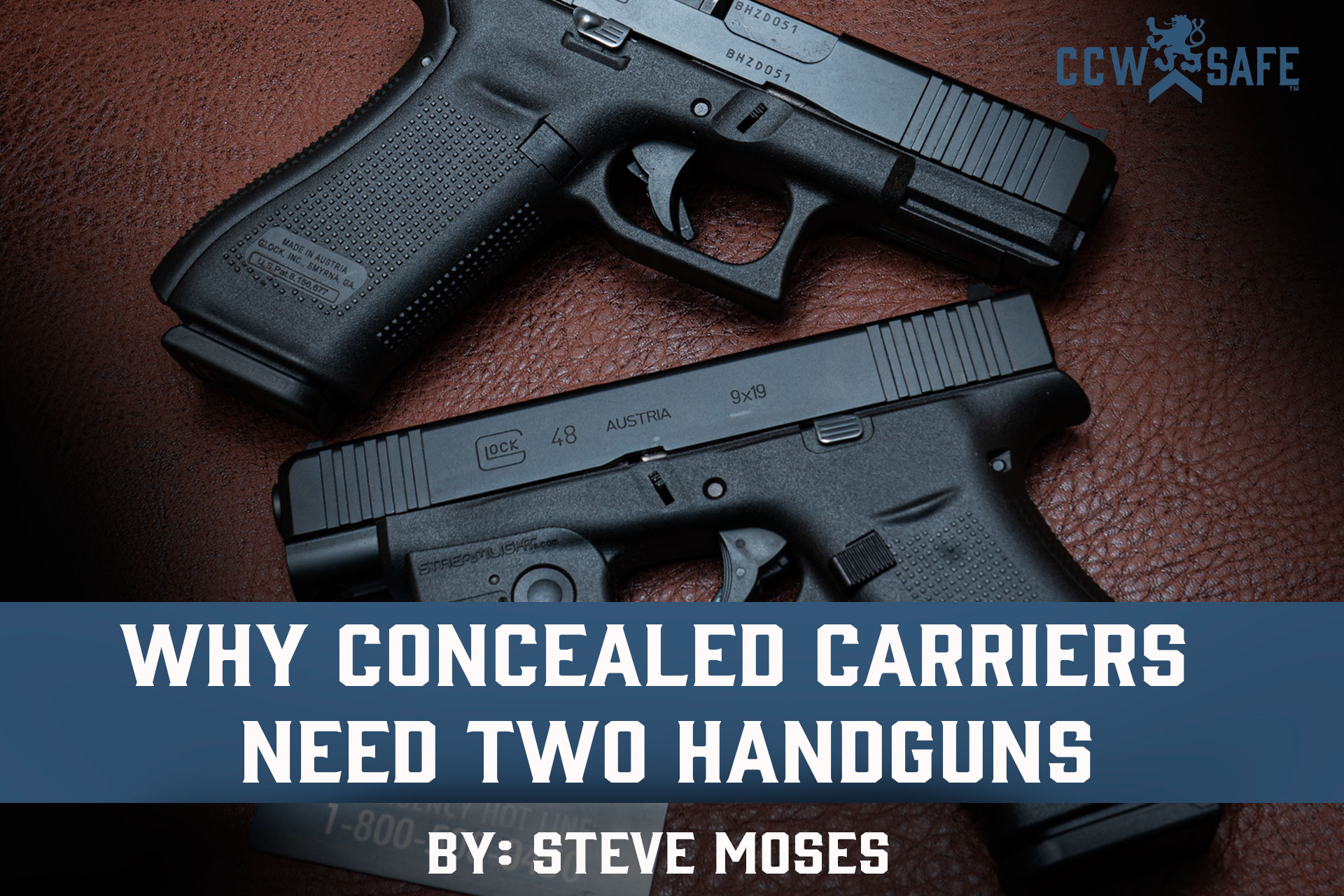
Posted on October 21, 2019
WHY CONCEALED CARRIERS NEED TWO HANDGUNS
WHY CONCEALED CARRIERS NEED TWO HANDGUNS
There is a saying that goes: “Beware of the one man that owns one gun, because he probably knows how to shoot it.” My variation of that saying goes: “Beware of being the man that only owns one gun, because if something happens to it, he is screwed.”
Many firearm instructors are of the opinion that concealed carriers should always carry a backup handgun. That is sound advice. The primary handgun can be damaged or experience a catastrophic malfunction in mid-fight. I think persons who carry and rely upon a firearm for a living or a concealed carrier who lives or works in an area with a high crime rate should heed that advice. However, the odds are good that most concealed carriers will never need to resort to a secondary handgun in a lethal force encounter. If this is the case, why does a concealed carrier need a second handgun?
- If a concealed carrier is involved in a shooting, there is a very good chance that the handgun will be seized by responding law enforcement and retained for some time. One of our students was involved in a shooting in a large metropolitan area, and his handgun was not only seized by the police but subsequently lost by them. To make matters worse, his attacker was a member of a particularly brutal gang, and a bounty was allegedly issued for his murder. One handgun has just become no handgun.
- Concealed carriers should know where their handgun is at all times and secure it against theft when not in their possession. The odds are slight that the handgun will be stolen if these steps are properly taken, but sometimes the stars align and despite the best efforts of the rightful owner his or her handgun get stolen. One handgun has just become no handgun.
- Handguns break sometimes. I had to send in a Glock frame one time when one of the four rails broke (one of the reasons I like Glocks is that it continued to function even with a broken rail). Handguns are mechanical devices, and all handguns are susceptible to wear and tear or even human error during the manufacturing and assembling process. I have seen handguns go down from being fired out of battery, faulty reloads, squibs (primer detonated but not the powder, and bullet was lodged partially down the barrel), and cartridges that were not fully crimped. One handgun has just become no handgun.
- Loss of critical parts while cleaning the handgun. I just lost a $4.00 plunger tube spring while cleaning my Generation 5 Glock 19 that was launched during reassembly. I was unable to purchase a replacement from any of the local gun stores and had to order one online (I actually ordered four in case I allow this to happen again). As a result, that handgun is now occupying a position in my gun safe. One handgun has just become no handgun.
If I only had one handgun, I am basically unarmed until I can replace, repair, or obtain key components. The best way to address this situation is to own another handgun. I think the best solution would be to possess a second handgun that is nearly identical to the first. That means identical model, caliber, sights, and trigger pull weight. A perfectly acceptable alternative would be a different model that is otherwise identical. For instance, my primary handgun might be a Glock 19 and secondary a smaller Glock 43, 43X, or 48.
If the concealed carrier routinely carries a striker-fired handgun like a Glock, S&W M&P, or Sig 320 and his or her secondary is a double-action/single-action handgun like a Beretta 92, Sig 226, or CZ PO-9 with a slightly different but significant manual arms, there is some possibility that in a stressful situation they may fail to de-cock double-action/single-action handgun prior to attempting to holster their handgun. One exception to this rule might apply to those concealed carriers that have chosen a small revolver as a secondary handgun. However, they are harder to shoot well, hold less ammunition, and the process of reloading is both slower and slightly more complex.
In summary, concealed carriers should consider owning at least two handguns. The more similar they are the better. Even if the same owns more, in the event that the handgun he or she routinely carries goes down its immediate replacement should be one that operates in the same manner and not possess a significantly different manual of arms. The concealed carrier would probably be best served by occasionally practicing with the secondary if there is any significant difference between the primary and secondary handguns.
 |
Steve MosesSteve is a long-time defensive weapons instructor based out of Texas who has trained hundreds of men and women of all ages for more than two decades on how to better prepare to defend themselves and their loved ones. Steve has completed over 80 private-sector and law enforcement-only defensive weapons and tactics classes, and has trained civilian and law-enforcement officers in six states. Moses is a reserve deputy, former member of a multi-precinct Special Response Team, competitive shooter, and martial artist. Steve has written numerous articles for SWAT Magazine and other publications. Steve is a licensed Texas Level 4 Personal Security Officer and Instructor who was Shift Lead on a mega-church security detail for seven years, and has provided close protection for several former foreign Heads of State. He is currently an instructor at Relson Gracie Jiu Jitsu/Krav Maga in Tyler, Texas and Director of Training for Palisade Training Group (www.ptgtrainingllc.com). |